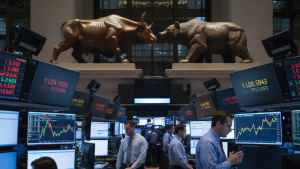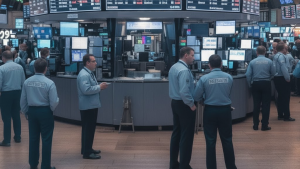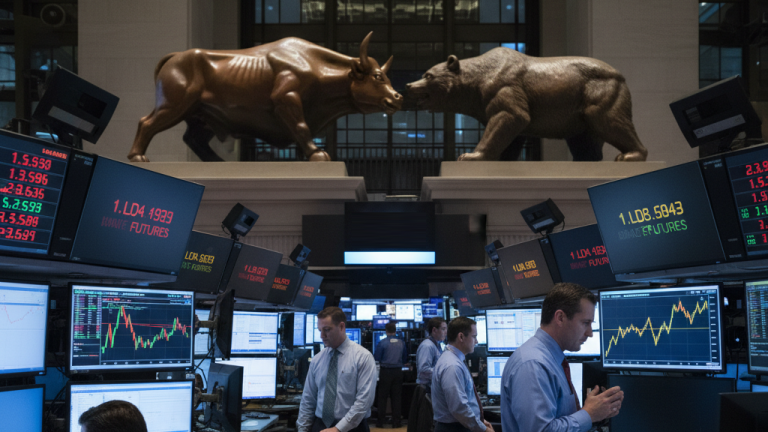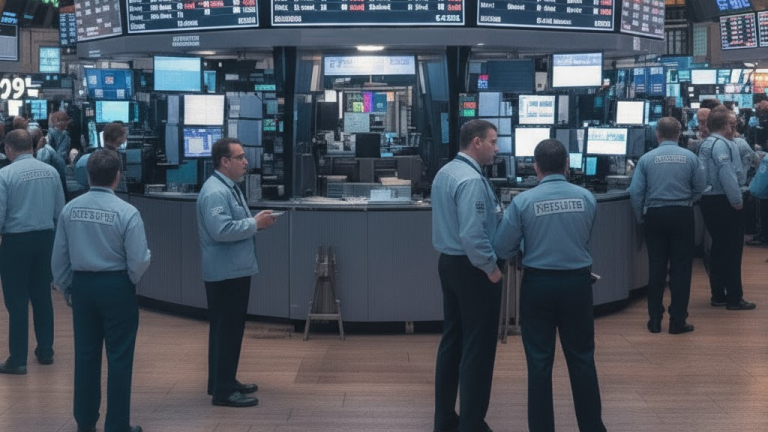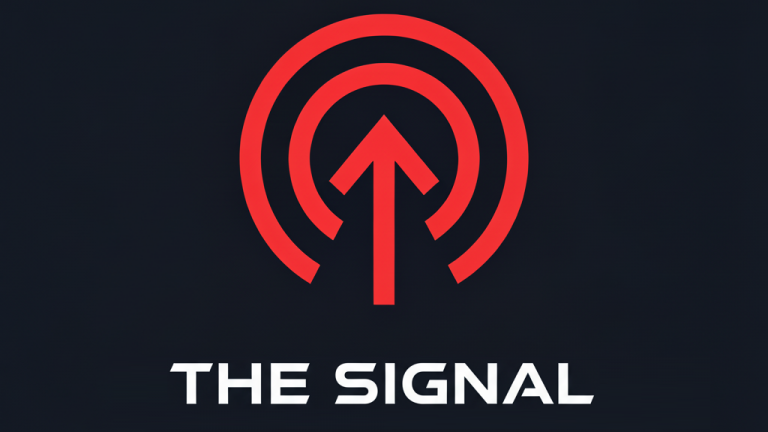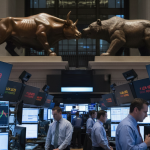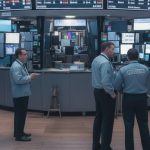Executive Summary: Tariffs Again?
A single social media post from President Donald Trump threatening a “massive increase” in Chinese tariffs shattered months of market calm on Friday, triggering the most severe single-day decline in U.S. stocks since April. The geopolitical shockwave ignited a broad, risk-off sell-off, striking a market already seen as vulnerable due to high valuations and extreme concentration in a handful of mega-cap tech stocks. The threat provided the definitive trigger for investors to lock in profits and aggressively cut risk.
The market’s anxiety was amplified by the ongoing U.S. government shutdown, now in its 10th day. The resulting data blackout has left the Federal Reserve and investors “flying blind” without key inflation and employment reports. In a classic flight to safety, capital fled equities and speculative assets, pouring into U.S. Treasury bonds and gold.
What Happened? A Blow-by-Blow Account
The trading session on October 10, 2025, abruptly ended a long period of market complacency. The day began calmly near all-time highs but was completely upended by President Trump’s statements on his Truth Social platform threatening new tariffs on Chinese goods. He cited Beijing’s recent export controls on rare earth metals as a “very hostile” action.
Adding to the fire, Trump cast doubt on a planned meeting with Chinese President Xi Jinping at the upcoming APEC summit, a meeting markets had viewed as a key opportunity for de-escalation. This signal of deteriorating diplomatic relations sent the market into a tailspin.
The reaction was immediate and severe. Roughly six out of every seven stocks in the S&P 500 fell. The Cboe Volatility Index (VIX), Wall Street’s “fear gauge,” surged to a reading of 22, indicating a sharp rise in investor stress.
The tech sector, with its heavy reliance on global supply chains and Chinese revenue, bore the brunt of the selling. Semiconductor firms were hit particularly hard, with Advanced Micro Devices (AMD) plunging more than 6%. Chinese companies listed in the U.S., like Alibaba (-8%) and Baidu (-6.6%), also tumbled.
Adding to the gloom, the University of Michigan’s preliminary October consumer sentiment report registered a weak reading of 55, underscoring persistent consumer anxiety about the economy.
Why It Matters: Contextualizing the Sell-Off
Friday’s rout was more than a reaction to a headline; it exposed deep vulnerabilities that had been simmering beneath the market’s surface.
The Shattering of Complacency: The sell-off was a brutal reminder that geopolitical risk can re-emerge without warning. Its violence, however, points to the market’s fragile structure. As of this month, the ten largest companies in the S&P 500 account for over 40% of the index’s value the highest concentration since at least 1972. The rally has been powered by a narrow AI narrative and hopes for Fed rate cuts. Trump’s threat was a precision strike against the tech sector, the market’s most crowded and expensive trade, destabilizing the entire system.
The Shutdown’s “Fog of War”: The government shutdown acted as a powerful volatility multiplier. By halting the release of key economic reports like the Consumer Price Index (CPI), it has created an “information fog.” In the absence of hard data to anchor decision-making, investors are far more likely to react to fear and headlines, turning a market shock into a rout.
“Trade War 2.0”: A More Strategic Conflict: This is not a simple dispute over trade imbalances. It has morphed into a strategic competition over foundational technologies. China’s restriction on rare earth metals and U.S. controls on AI chip exports represent a weaponization of economic supply chains. For investors, this means a company’s operational footprint is now a geopolitical vulnerability, a reality illustrated by the acute pain felt by semiconductor firms on Friday.
The Debate: The Bull vs. Bear Case
In the wake of the sell-off, Wall Street is sharply divided on what comes next.
The Bull Case: A Healthy, Overdue Correction Bulls argue this was a short-term overreaction. They believe Trump’s threat is a negotiating tactic, not policy, and that the U.S. economy remains resilient with strong corporate profit margins. From this perspective, a 5-10% pullback is a necessary “heat check” that wrings out speculative excess and creates long-term buying opportunities, all backstopped by an accommodative Federal Reserve still expected to cut rates.
The Bear Case: The Start of Something Worse Bears argue this is the first tremor of a larger downturn. They take the tariff threat at face value, warning of a “tariff-cession” that could cripple corporate profits and freeze business investment. They see this as the bursting of the AI bubble, echoing warnings from figures like Jamie Dimon. Furthermore, the data blackout raises the risk of a Fed policy error, while recent earnings from consumer companies like Levi Strauss suggest the U.S. consumer is already stretched thin and ill-prepared for a trade shock.
Key Stock Movers
- Advanced Micro Devices (AMD): Plunged over 6% on fears of supply chain disruption.
- Nvidia (NVDA): The AI bellwether lost as the trade threat challenged its global growth narrative.
- Tesla (TSLA): Dropped over 4%, reflecting its large manufacturing and sales footprint in China.
- Amazon (AMZN): Tumbled more than 3% on fears of a global consumer slowdown.
- Apple (AAPL): Slipped 2% due to its deep integration with Chinese manufacturing and sales.
- Levi Strauss (LEVI): Fell over 12% despite beating earnings estimates, a sign that in a risk-off environment, even strong performance can’t shield a stock seen as overextended.
Outlook for the Week Ahead (Commencing Oct 13, 2025)
The market’s focus now shifts from geopolitical shock to corporate fundamentals as Q3 earnings season begins.
Spotlight on Big Banks: Reports from JPMorgan Chase, Citigroup, Wells Fargo, and other major banks next week will offer the first hard data on the economy’s underlying resilience. Investors will scrutinize commentary on credit growth, loan loss provisions, and the health of the U.S. consumer.
The Data Vacuum Persists: With the government shutdown expected to continue, key inflation reports (CPI, PPI) will be delayed. The market will rely heavily on corporate guidance to gauge the economic outlook.
Holiday Trading Conditions: Monday, October 13, is a federal holiday (Columbus Day). U.S. stock markets will be open, but the bond market will be closed, which can lead to lower equity trading volumes and potentially higher volatility.
Analysts are cautious heading into the week, with many viewing the market as overbought and due for a pullback. The key question is whether Friday’s sell-off was a one-off event or the start of a larger correction. The market’s reaction to the upcoming bank earnings will be a critical test.
Disclaimer: This report is for informational purposes only and does not constitute financial, investment, legal, or tax advice. The information provided is based on publicly available data and sources believed to be reliable, but its accuracy cannot be guaranteed.

